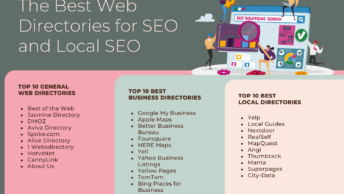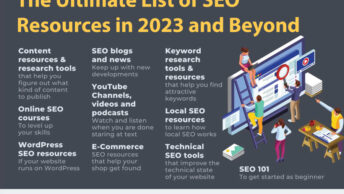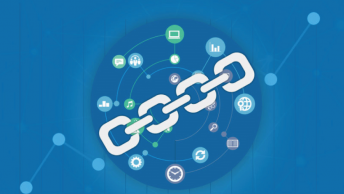For many website owners, the Panda Update has come as a wake up call that they need to make changes to their websites. While the Panda algorithm will change and fine tune over time, the signals it looks for will always focus around quality. There are two important points to understand about the goals of the Panda update: 1. Google is looking to remove lower quality websites and 2. many of the ranking factors computed for Panda are done “offline” and “over a long period of time.” What this means is that, if you want to come back, the sooner you start identifying problems and fixing them, the sooner your traffic and rankings will return. But enough theory. What are some actionable items site owners should do to come back from Panda or prevent being caught in the future? Here is my top list …
Identify Low Quality Content – Everyone has a different idea about what “low quality” content is and how Google might define it. I think the real key is understanding it’s not just one thing. It’s a combination of different factors. Here are my top actionable steps for identifying and fixing low quality content.
- Look at all of your content. Make sure it doesn’t exist elsewhere on the web. If you are using duplicate or near duplicate content, rewrite it, remove it, or block it from search engines.
- If other websites are scraping or stealing your content, report them for a DMCA violation. Report them to both Google and their hosting company. If they are using your RSS feed to scrape you, embed links back to your original content. Doing so will help Google identify the original source.
- Make sure you don’t have duplicate internal content. Try to not put the same content on more than one page or URL (especially with parameters) if you can avoid it. Use the rel= canonical tag to help Google understand duplicate content you can’t avoid.
- Look for pages with low engagement. Bounce rate and exit rate by themselves aren’t an indicator of poor content. If people are spending minutes on your page and then leaving, that’s usually OK. It means you answered their question. A high bounce and exit rate with only several seconds per page can be an indicator of low quality. Update or remove those pages.
- Identify your weakest linked pages. Services such as Open Site Explorer will provide you with strength numbers for your internal pages. Look at your lowest pages to see if they should be removed, updated, or need a link building campaign.
- Flatten out your hierarchy as much as possible. If you have pages that are more than 3-4 clicks from your homepage or an internal link concentration, your website has architecture issues. Depending on how bad, you may have serious work fixing it. The easier it is for a search engine spider to crawl your site, the better. HTML and XML sitemaps can help, but they should be a secondary solution. Being naturally crawl-able is a primary goal.
- Infinite websites are a bad idea. There was a time where the goal of many publishers was to put up as much content as possible and hope some of it ranks. Google has changed since then. They are looking for tight quality, not mountains of crap.
Improve Your Link Profile – Having a strong link profile has always been a hallmark of good website; however, in the past it was possible to keep a site alive with a lot of low quality links. IMHO this has changed. Low quality links can work against you if that’s all you have, so here are my tips for improving your backlink profile …
- If you are engaging in any shady link buying, link trading, or link schemes, stop sooner rather than later. I wouldn’t pull the plug on everything all at once, but slowly stop using the lowest quality things first.
- Concentrate on getting high quality links from educational, government, or trustworthy trade organizations. If you have to create a non commercial section with content that these websites are more likely to link to, do it. It will pay off in the long run.
- Be as press-worthy as possible. Whenever you do something noteworthy, put out a press release and contact the people in the space who cover the news to let them know about it. Don’t blindly spam reporters or bloggers. Try to establish relationships BEFORE you need a favor, not after. If you aren’t doing anything noteworthy, look for ways to start.
- Using a blog to push linkbait or infographics is still an effective technique. Sure, it’s harder, but it’s still worth the effort. Makes sure you are doing it on a regular basis.
- Guest blogs and interviews are still effective tactics. Most of the high quality websites in your area may be saturated with guest blogging requests, so you may have to start on the “B” list. Try to do as many as you can per month, with a minimum of 1-2 if at all possible. Gaining links slowly over time is good signal to send Google.
Branding and Social Media – Once you have your content cleaned up, and you are working on improving your backlink profile, using social media is powerful tool. Providing information, solving problems, using discounts, and providing customer service are just some of the ways you can engage people with social media. You need to experiment and find which is the best use of your time. Facebook, Twitter, and Google+ are the three biggest websites you should start with.
- Push out the type of information, links and content that is the most compelling to people following you, not the most self serving. Facebook in particular only shows your updates to users who have shown they were “interested” in you in the past (via their edgerank algorithm).
- Use your own custom URL shortener if you can instead of a generic one. It helps people start to recognize your brand.
- Push out your links during the time of day when the most users will see it and are likely to click or retweet it. Don’t be afraid to ask for reweets or repeat your tweets for multiple timezones.
- Do everything you can to set yourself up as an informational authority in your niche. Sometimes it can be hard if your niche is big–like, say, travel. Instead, find a smaller niche like family travel or honeymoon planning. The more people associate you with a keyword and type your company name with a keyword into a search engine, the better.
Time is a Factor – Even if you had the resources to do all of these things in 30 days, that might not be the best idea. IMHO part of Panda is comparing your current “scores” to your previous ones. Showing slow and steady growth and improvement is much better than a rapid burst of activity followed by a rapid slowdown. It’s like the tortoise and the hare: slow and steady wins the race.
In conclusion, my recommendations are to first focus on removing the bad factors of your website, both on your website and on other websites. Then work on building up some of the good signals and reenforcing them with natural user data that search engines see across the web. If you do, Panda will be a cute animal that you only care about when you visit the zoo.
If you’re looking for more information about Panda, I recommend reading this Interview with Vanessa Fox.








Has this author actually recovered sites from Panda? Or is he just talking about something he knows nothing of.
Isn’t Wikipedia considered an infinite website?